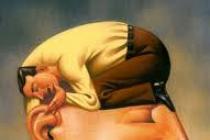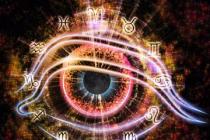Experts explain how to properly use analgesics to get the most benefit and minimize potential negative side effects.
Photo from http://waismanclinic.com
How often, at the first hint of pain, we reach out to the first aid kit at home and take out a painkiller. Billions of analgesic tablets are sold in pharmacies every year, and the number of sales increases every year. The British charitable foundation Nuffield Health conducted a study and found that one in three people who take painkillers worry that they will eventually become dependent on the drugs. There are other concerns, such as stomach bleeding as a side effect of some analgesics. And one more burning question: is it worth buying expensive drugs? Are they really faster and more reliable than their cheaper counterparts?
Cheap medicine is not a hindrance
There is no need to buy more expensive analgesics in fancy packaging that says the drug hits the mark and works faster. Most often, these are the same paracetamol and ibuprofen, which cost 10 or even more times more than ordinary pills. “I always choose the drug that is cheaper,” says Dr. Mike Platt, lead specialist in pain management at Imperial Healthcare, British Healthcare. “The instructions for some drugs say they work faster, but the difference in absorption rate is negligible. A normal pain reliever takes 20-30 minutes to take effect, and even “quick-acting” drugs go through the same route: they have to go into the stomach, be broken down, then absorbed in the small intestine.” Liquid medicines may work faster because they are easier to break down, but the difference in time will still not be significant.
Most drugs for migraine or menstrual pain are made on the basis of standard painkillers, most often non-steroidal anti-inflammatory drugs, the most common of which is ibuprofen (this group also includes diclofenac, aertal, nalgesin, nise - translator's note). The exception is migraine preparations based on triptans (sumatriptan, almotriptan and others). These substances mimic the action of serotonin, the “happiness substance” produced by the brain, the lack of which may be one of the causes of migraines. These are expensive drugs and it is advisable to coordinate their intake with your doctor.
Will the caffeine in the medicine help?
Many analgesics contain caffeine to enhance the effect. Some studies show that this component makes the drug 40% more effective. In the case of a headache, caffeine constricts dilated blood vessels, which can cause discomfort.
Dr. Giles Erlington, director of the charity National Migraine Center, doubts that is the case, however. “If I were a cynic, I would say that caffeine is put into pills so that patients come back for them again and again,” he says. Dr. Platt is also skeptical about caffeine: “Caffeine stimulates the brain, but I doubt that it helps the painkillers work. If so, the caffeine in a cup of coffee would have exactly the same effect.”
If caffeine really works, then it's better to get it from coffee, black or green tea (green has less caffeine) than a large dose in a pill. Caffeine has an anti-inflammatory effect, but in the composition of the drug, it can lead to side effects such as insomnia and migraines, as well as addiction.
Do not take medicine on an empty stomach
If you wake up in pain, you are strongly tempted to take the pill right away. But if it's ibuprofen or another non-steroidal anti-inflammatory drug (NSAID), like aspirin, it can damage your stomach.
Anti-inflammatory drugs are especially effective for muscle pain, such as in the neck, as well as for menstrual cramps. They work by inhibiting enzymes that cause inflammation and pain. But these same enzymes protect the gastric mucosa from the action of the acid contained in the gastric juice, so when they are taken, irritation of the stomach walls is possible. “This is most likely to occur if NPS are taken on an empty stomach because food acts as a buffer, softening their effect,” says Dr. Platt. “Milk or yogurt is an ideal protection for the gastric mucosa.”
Dr. Platt also advises taking painkillers with a full glass of water. In this case, the concentration of the drug acting on the stomach decreases, and the tablet does not get stuck somewhere on the way to it. You can take the tablets with tea or other drinks.
Paracetamol can be taken on an empty stomach, because it does not act on enzymes and, accordingly, the mucous membrane, its target is certain pain centers in the brain.
The main thing is to take the medicine on time
Many take their painkillers at the wrong time and then complain that they don't work, says Nito Beijekal, consultant gynecologist at Barnet Hospital in London. This is especially true for menstrual pain. At this time, the uterus produces prostaglandins, physiologically active substances that constrict blood vessels to prevent too much blood loss. The contraction of blood vessels leads to intense muscle spasms of the uterus, causing pain.
You need to take an anesthetic drug when prostaglandins are just starting to be produced, that is, the day before bleeding. “Take a non-steroidal anti-inflammatory drug—the only drug that suppresses prostaglandins—at the first sign of bleeding or pain,” advises Dr. Beijekal.
Dr. Platt also advises taking painkillers as early as possible. For example, those who suffer from migraines should take the medicine at the very beginning of the attack. Patients with arthritis tend to experience particularly severe pain in the morning. They should take the medicine in the morning (with food) or a long-acting tablet before going to bed.
The best hangover cure
Paracetamol is best for hangovers, as NSAIDs can irritate the stomach lining, which is already inflamed by alcohol, says Roger Nuggs, a consultant with the Royal Pharmaceutical Society. "Hangover headaches can be related to dehydration, so it's important to drink plenty of water while you're at it," he says.
Dr. Platt believes that only codeine in the pain reliever, a weak opioid that blocks pain receptors, will help with a very severe hangover headache.) (In Russia, unlike the UK, these drugs are sold only by prescription - translator's note.)
As we age, our organs don't work as efficiently as they did when we were young, and drugs are removed from the body more slowly. Elderly patients should ensure that there is sufficient time between doses of drugs, says Dr. Platt. The kidneys take longer to excrete chemicals, and the heart also works slower, slowing blood circulation. As a result, the drug also circulates more slowly in the body.
The ratio of fluid in different parts of the body also plays an important role. For most of life, the amount of fluid inside our cells exceeds the amount outside of the cell, but this ratio changes with age. As a result, the active substance of the drug may be retained in the interstitial fluid, it takes longer for it to get to the liver, where it is metabolized. For this reason, for the elderly, topical anti-inflammatory agents in the form of a gel, cream or patch may be more useful, for example, against knee pain than tablets. High doses of non-steroidal anti-inflammatory drugs (except aspirin) are associated with a higher risk of blood clots, so older people who are prone to stroke or heart attack should consult their doctor about taking them.
"Just one more pill" can be harmful
Even if you do not exceed the daily dose, taking three tablets instead of one or two can be dangerous. "The liver won't be able to make enough enzymes to metabolize the drug," says Dr. Platt. “In addition, the third tablet of a non-steroidal anti-inflammatory drug increases the risk of damage to the gastric mucosa.” The recommended maximum single dose is the amount of medicine that the body can handle in the best possible way at one time. Chronic intake of paracetamol in excess of the daily dose (4 grams) can lead to severe and even fatal liver damage.
Will addiction develop?
Many people fear that the constant use of painkillers will lead to the development of dependence on them or addiction. Neither will happen for over-the-counter analgesics such as paracetamol or non-steroidal anti-inflammatory drugs.
As for opioids, such as codeine, which are available only with a doctor's prescription, they become addictive, and if taken regularly, the patient over time requires a large dose to achieve an analgesic effect. As a rule, this does not happen if the main active substance of the tablet is different, and codeine is contained in it only in a very small amount.
Headache pills can affect her negatively
If you take headache (migraine) pain medication more than 10 days a month, it may have the opposite effect. Perhaps this is because migraines have a natural “shutdown mechanism” that is suppressed by drugs if used too often. Dr. Erlington believes that frequent migraines that are unresponsive to medication are best tolerated and allowed to go away naturally. He recommends consulting a doctor to find the cause of frequent migraines, and not constantly using drugs that are fraught with complications.
 Photo from the site http://ru-sabi.livejournal.com
Photo from the site http://ru-sabi.livejournal.com
Why you shouldn't split a pill in half
Some believe that it is enough to take half a pill and the pain will go away. "If there's no risk on a pill, don't break it," Dr. Erlington advises. “Such a pill will not achieve an analgesic effect at half the dose. The impact on the pain must be palpable.”
Non-steroidal anti-inflammatory drugs are often coated (designed to protect the stomach wall from irritation), and if such a tablet is broken in half, it will crumble. The drug will be more difficult to take, and in addition, the substance will begin to be absorbed in the stomach, and not in the small intestine, as it should be. It must be borne in mind that some tablets are designed for slow gradual absorption (for example, 12-hour drugs), but there will be no prolonged effect if the protective coating of the tablet is broken.
Translation by Marina SOLODOVNIKOVA
In the instructions for the use of medications, there is a clause on interaction with alcohol, indicating the consequences of such a combination. The fact that alcohol and painkillers cannot be drunk at the same time is known to people who are quite far from medicine. But in life there are situations from which no one is immune. For various reasons, well-being may worsen after drinking alcohol, or there is a good reason to drink before the end of the drug.
Read in the article
Synergy mechanism
Analgesics - opiates, antispasmodics, non-narcotic analgesics and non-steroidal anti-inflammatory drugs - are designed to eliminate pain syndromes of various origins. Ideally, local medicines or tablets of similar action should be prescribed by a doctor, taking into account possible contraindications. However, with acute symptoms - severe toothache, headache, "shooting" in the ears, lumbago, neuralgia or colic - analgesics and antispasmodics are used as an emergency. All types of painkillers are not compatible with alcohol.
Penetrating into the blood, the active substances of drugs affect nerve impulses, like depressants, blocking the sensitivity of the central nervous system to pain. Antispasmodics relax smooth muscle fibers, dilate blood vessels, eliminating their convulsive contractions. To increase the effectiveness of many drugs included several active substances to relieve pain of various origins. The effectiveness of the medication taken lasts for several hours. Utilization occurs in the liver, after which the metabolites are excreted through the kidneys and intestines.
Alcohol easily penetrates into all biological environments of the body and interacts with any medicinal substances in the blood. Painkillers are no exception. Alcohol, as a potent toxin, when mixed with the chemical components of analgesics, can provoke pathological reactions. Its presence in the body leads to a multiple increase in the side effects of drugs, slows down their metabolism. Medicines, in turn, inhibit the biotransformation of alcohol compounds.
The interaction of alcohol and painkillers is expressed in the following consequences:
- strengthening the inhibitory effect of the central nervous system. Alcohol, like painkillers, is a depressant that weakens neural connections in brain structures. The consequence of such an interaction may be disorders of consciousness, numbness of the limbs, decreased hearing and vision, inability to coordinate. The most dangerous consequence is the blocking of the respiratory center;
- damage to the gastrointestinal tract and liver. Among the side effects of NSPS: exacerbation of gastritis, inflammation of the duodenum, pancreatitis, impaired bile secretion. Most painkillers of this type are based on acids that irritate the mucous membranes. When processed by the liver, drugs break down into toxic compounds. Misuse of analgesics alone can lead to the development of a disorder, and in combination with alcohol this is inevitable;
- dysfunction of the cardiovascular system. Alcohol dilates blood vessels, and under the influence of painkillers, especially those containing antispasmodics, this can lead to a sharp drop in blood pressure, insufficient blood supply to internal organs, hypoxia, ischemia, and collapse;
- increased load on the excretory system. Taking alcohol with analgesics leads to a neutralization or a significant decrease in the analgesic effect due to the diuretic effect. As a result of the intake of a large amount of chemical residues, the kidneys can suffer.
Damage to the central nervous system and organs of the digestive tract as a result of the simultaneous intake of alcohol and analgesic drugs develops rapidly. The reaction from the liver and kidneys may follow within a few days.
The critical toxic dose of drugs and alcohol is almost independent of the amount. There are cases when people lost consciousness or fell into a coma after 1-2 tablets of analgin, drunk after a glass of cognac.
Different types of painkillers with alcohol
Depending on the type of the main active substance, painkillers with alcohol provoke specific reactions.
Ibuprofen
Included in the preparations Nurofen, Ibufen, Ibuklin, Solpaflex. Belongs to the NSPS group, has a pronounced analgesic effect. When combined with alcohol, it causes severe dizziness, noise and ringing in the ears, visual disturbances, eyelid edema, inflammation of the conjunctiva, motor agitation, tremor, severe sweating, shortness of breath, tachycardia. In severe cases, toxic hepatitis, aseptic meningitis, respiratory failure, nephrotic syndrome are possible.
Nimesulide
On the basis of this substance, Nimesil, Nimesan painkillers are produced. It is used to eliminate toothache, headache, rheumatic pain, with algomenorrhea. In combination with alcohol causes hot flashes, severe reddening of the face, tachycardia, increased blood pressure. In people with impaired functions of the gastrointestinal tract, sharp pains in the epigastrium, spasms in the intestines are possible. In case of drinking a large amount of alcohol, there is a risk of acute hepatitis and internal bleeding.
Diclofenac
Preparations with its content: Ortofen, Voltaren, Dolex, Dicloberl. The funds are used to relieve symptoms of osteochondrosis, rheumatism, gout and other joint and muscle diseases. Interaction with alcohol leads to severe vomiting, cutting pains in the stomach and intestines, diarrhea. There are also possible jumps in blood pressure, blurred vision, ripples in the eyes, a change in the blood count, toxic damage to the liver. In severe cases, cerebrovascular accident, heart attack, stroke are likely.
Paracetamol
One of the most popular drugs that are part of dozens of antipyretic and analgesic drugs, including: Teraflu, Rinza, Citramon, Ibuklin, Solpadein, Efferalgan, Coldrex and many others. Careless use simultaneously with alcoholic beverages usually causes severe nausea, vomiting, stomach cramps, numbness of the extremities, severe dizziness. Possible internal bleeding, development of hepatosis.
Ketorolac
One of the most effective analgesics. Included in the preparations of Ketanov, Ketorol. In the process of interaction with alcohol, the analgesic effect decreases, swelling develops, stomach pains, nausea, headache, tremor, and heart rhythm disturbances appear. Among the long-term consequences: the development of hepatosis or fibrosis, chronic nephritis.
Other painkillers
To eliminate pain, antipyretics, antispasmodics, codeine-containing drugs, phenobarbital-based drugs, and various combinations are often used. Among them: Aspirin, Analgin, No-Shpa, Strimol, Tramadol, Trigan, drugs for local anesthesia: Novocaine, Lidocaine. None of the complexes is compatible with alcoholic beverages. Violation of the prohibition can lead to an unpredictable reaction and lead to irreparable health problems.
Precaution
To protect yourself from possible troubles, you need to know the rules for using drugs and remember how alcohol works in the body. Since the last glass was consumed, its residual compounds continue to circulate in the blood during the day. If the libation was plentiful - for 2 days. During this period, painkillers should not be taken, as the liver, kidneys and blood vessels remain at risk.
After the use of analgesic tablets, the use of analgesic suppositories, plasters or injections, the active substances remain in the body for 6 to 12 hours. Metabolites of the combined agents persist for up to 24 hours. Only after this time is it allowed to drink alcohol. To guarantee good health, it is recommended to wait not for the minimum period, but for a few hours longer.
Preparation of moonshine and alcohol for personal use
absolutely legal!
After the demise of the USSR, the new government stopped the fight against moonshine. Criminal liability and fines were abolished, and an article prohibiting the production of alcohol-containing products at home was removed from the Criminal Code of the Russian Federation. To this day, there is not a single law that prohibits you and me from engaging in our favorite hobby - making alcohol at home. This is evidenced by the Federal Law of July 8, 1999 No. 143-FZ "On the administrative responsibility of legal entities (organizations) and individual entrepreneurs for offenses in the field of production and circulation of ethyl alcohol, alcoholic and alcohol-containing products" (Collected Legislation of the Russian Federation, 1999, No. 28 , item 3476).
Excerpt from the Federal Law of the Russian Federation:
"The effect of this Federal Law does not apply to the activities of citizens (individuals) who do not produce products containing ethyl alcohol for the purpose of marketing."
Moonshine in other countries:
In Kazakhstan in accordance with the Code of the Republic of Kazakhstan On Administrative Offenses dated January 30, 2001 N 155, the following liability is provided. Thus, according to article 335 “Manufacture and sale of home-made alcoholic beverages”, illegal production for the purpose of selling moonshine, chacha, mulberry vodka, mash and other alcoholic beverages, as well as the sale of these alcoholic beverages, entails a fine in the amount of thirty monthly calculation indices with confiscation of alcoholic beverages , apparatus, raw materials and equipment for their manufacture, as well as money and other valuables received from their sale. However, the law does not prohibit the preparation of alcohol for personal purposes.
In Ukraine and Belarus things are different. Articles No. 176 and No. 177 of the Code of Administrative Offenses of Ukraine provide for the imposition of fines in the amount of three to ten tax-free minimum wages for the manufacture and storage of moonshine without the purpose of sale, for the storage without the purpose of sale of apparatus * for its production.
Article 12.43 repeats this information practically word for word. “Production or purchase of strong alcoholic beverages (moonshine), semi-finished products for their production (mash), storage of devices for their production” in the Code of the Republic of Belarus on Administrative Offenses. Paragraph No. 1 states: “Manufacturing by individuals of strong alcoholic beverages (moonshine), semi-finished products for their manufacture (mash), as well as storage of devices * used for their manufacture - entails a warning or a fine of up to five basic units with confiscation of the indicated drinks, semi-finished products and devices.
*Purchase moonshine stills for home use, it is still possible, since their second purpose is the distillation of water and the production of components for natural cosmetics and perfumes.
Not only is alcohol very harmful to the human body, but alcohol is negatively combined with many substances and drugs that people use in parallel with drinking alcohol. The body is already very weakened and exposed to the action of numerous toxins, so there is also such a situation that it needs to interact with other substances that a person is using at this moment. And the result can be very unpredictable, but in the vast majority of cases negative.
It is always necessary to understand how certain substances interact with alcohol. Usually for this you need to read the instructions - this item, as a rule, is given sufficient attention. But what if you don't have the manual, or you can't read it for some other reason? Then it is necessary to understand how at least the most common drugs or at least the main types of drugs interact with alcoholic beverages. To begin with, let's try to deal with painkillers, because they are used by people very, very often - often together with alcoholic beverages, or after them.
Interaction with narcotic painkillers
The fact is that painkillers are fundamentally different, so it is necessary to divide them into different categories, which should be considered separately. The first important group is narcotic substances that can be prescribed by a doctor and dispensed only by prescription. With them, the use of alcohol is strictly unacceptable. The fact is that alcohol enhances all their side effects, for example, CNS depression, effects on the liver, and so on. So you can’t take it together, it’s an anesthetic and any alcohol is incompatible.
Ibuprofen-based drugs
Ibuprofen is a fairly effective pain reliever. Its feature is a fairly mild effect, which is such that the drug can be taken even by children. This misleads many, people begin to believe that the drug can be taken with anything, but this is a big mistake. In fact, as a result of its combination with alcohol, irritation of the mucous membranes of the stomach and intestines occurs. As a result, gastritis may develop. In addition, the effectiveness of the drug will drop sharply, which is also not good.
Preparations based on Diclofenac
It is a non-steroidal anti-inflammatory type drug based in part on phenylacetic acid. It perfectly stops pain, fever and various types of inflammatory processes. The problem is that the drug is already, in fact, quite toxic, therefore its excessive use is unacceptable, and in combination with alcohol, this toxic effect is greatly enhanced. This is especially bad for the liver, it is subjected to a huge load, in the worst cases, even cirrhosis of the liver can develop. Yes, and the central nervous system suffers from this very much.
Paracetamol-based preparations
This drug is considered even milder and safer. They even give it to kids. True, its analgesic effect is rather weak, it lowers the temperature much better. But here it interacts with alcohol, again, negatively, alcohol and such painkillers are incompatible. It has a rather strong hepatotoxic effect, exposing the liver to a very large and very destructive load. So even weak painkillers with alcohol are absolutely not combined.
Conclusion
We figured out painkillers and their interaction with alcohol. But not only painkillers can cause different effects when it comes to interaction with alcoholic beverages. These can be, in principle, any substances, both various drugs (prescription or purchased freely, it does not matter), or simply active substances that in normal times will not cause the slightest discomfort to a person. But here the situation is quite different. We must not forget how active alcohol is, how much it can cause negative consequences in a person, even when used alone.
Always carefully read the instructions that come with the medicines. But it’s better to do it the other way, not drinking various alcoholic beverages in principle while you are undergoing treatment by any means - otherwise it deprives the procedure of meaning. After all, what is the point in destroying your health at the same time that you are trying to restore it? This is simply absurd - you need to at least do these things in turn, but not at the same time. So alcohol is incompatible with any drugs, no matter what you take.
www.vrednye.ru
Overview

Do not drink alcohol if you are taking certain types of pain relievers (analgesics), such as:
- strong painkillers;
- prescription painkillers.
You can drink alcohol with some over-the-counter pain relievers if you meet the following conditions:
- read the indications for taking the drug in the leaflet attached to the medicine;
- observe the dosage of the medicine;
- Do not drink alcohol in excess of the recommended daily allowance.
Where to get information
The leaflet that came with the pain medication or the box itself will contain the following information:
- about the dosage of this remedy;
- about whether it is safe to drink alcohol while taking this remedy.
Always follow these directions. You can get additional information:
- in or, there you can find information about your medicine;
- from your pharmacist or your doctor.
Paracetamol
Paracetamol is available without a doctor's prescription, as it is considered a safe drug if you strictly follow the instructions for use and do not exceed the dose. The combined use of paracetamol and alcohol significantly increases the risk of side effects, including acute liver failure. For this reason, the combination of paracetamol with alcohol is allowed only in exceptional cases.
Paracetamol should be used with caution if you have certain medical conditions, such as decreased kidney or liver function. Your GP or pharmacist can advise you.
Aspirin and ibuprofen
Aspirin and ibuprofen are available without a doctor's prescription. In general, you can drink a small amount of alcohol while taking aspirin or ibuprofen, as long as you follow the guidelines above.
If you exceed the recommended dosage of aspirin or ibuprofen, this will increase the risk of irritation of the stomach lining. This is even more likely if you exceed the recommended daily allowance for alcohol consumption, which can cause stomach bleeding.
If you have liver or kidney disease, take aspirin or ibuprofen only with your doctor's permission. Children under 16 should not be given aspirin.
Codeine, dihydrocodeine and tramadol
Codeine, dihydrocodeine, and tramadol are types of opioids (a stronger type of pain reliever). They are usually available by prescription only, although some less powerful drugs may be available from pharmacies. They are often combined with paracetamol.
Taking opioid pain medications can cause drowsiness and low blood pressure (hypotension), and alcohol can further enhance these effects. If the medicine affects you in this way, do not drink alcohol while taking opioid pain medication.
Morphine, pethidine, and other prescription-only painkillers
Morphine and pethidine are also opioid pain relievers. Drinking alcohol with these drugs will cause drowsiness, and the effect of these drugs will increase. Do not drink alcohol if you are taking these painkillers.
Many over-the-counter pain relievers are strong and do not drink alcohol while taking them.
spb.napopravku.ru
Paracetamol-based products and their compatibility with alcohol
Your head may hurt at any moment. The causes of cephalgia, and this is how doctors call this symptom, can be associated with both a spasm of the blood vessels of the brain, and an increase in the overall body temperature during colds or inflammatory processes. In each case, it is required to use different medicines, since they all differ from each other in the mechanism of action and the active components that make up the composition.
Height="" content="170"> Often, specialists prescribe drugs based on paracetamol for headaches. These can be tablets of the same name for adults or products in a different form of release - syrups, rectal suppositories. The latter are most often used in childhood.
Paracetamol is the safest remedy that has a minimum of contraindications and restrictions. It cannot be taken in the presence of individual intolerance to the active substance, but, as a rule, tablets are easily perceived by the vast majority of patients.
Paracetamol does not affect the blood vessels and, accordingly, does not change the level of blood pressure. This means that if you have a severe headache or fever after drinking alcohol, you can take this medicine. As a rule, one or two tablets are enough for an adult to relieve an acute attack. You can repeat the medication after four hours.
Paracetamol is included in the group of antipyretics and quickly relieves headaches with an increase in body temperature due to a viral disease, however, if discomfort is localized in other tissues and organs, its administration will not be as effective. So, in case of inflammatory processes, other medicines will be required, which are dangerous to combine with alcohol, even in small doses.
Means based on acetylsalicylic acid
Paracetamol acts gently and does not cause significant harm to the body, but its effectiveness is recognized as low. If the headache is difficult to endure, then you need to take other antipyretics. So, experts call effective medicines, which include acetylsalicylic acid.
 One of these drugs is known to all Aspirin. To get rid of a headache for several hours, it is enough to take one tablet. Another medicine, Citramon, works in a similar way. This is a combined medicine that, in addition to acetylsalicylic acid, contains caffeine and paracetamol.
One of these drugs is known to all Aspirin. To get rid of a headache for several hours, it is enough to take one tablet. Another medicine, Citramon, works in a similar way. This is a combined medicine that, in addition to acetylsalicylic acid, contains caffeine and paracetamol.
Experts warn that taking Aspirin and its analogues is dangerous because their active components can provoke vasospasm and increase blood pressure. Alcohol acts in a similar way, so the indicators when combined will reach critical values.
In addition, alcohol increases blood viscosity. This happens due to the gluing of all its shaped elements into small clumps. As a result, the movement of blood slows down. Against the background of a strongly narrowed lumen of arteries, veins and capillaries, this leads to an increase in pressure indicators.
Pain relievers that lower blood pressure
Paracetamol and Aspirin do not always save from pain. These pills will help bring down the fever, but if the discomfort is provoked by a migraine, then there is no point in taking them. In this case, it is required to act on the blood vessels that feed the brain tissue.
An effective way to eliminate throbbing or pressing pain in the temples or the back of the head is to take drugs that lower blood pressure.
After that, the vessels dilate, the blood begins to move through them at a normal speed, and the discomfort disappears. Experts do not advise choosing drugs that lower blood pressure on their own, since many of them are quite powerful and can provoke a serious deterioration in well-being. A person will not get rid of pain, and dizziness, tinnitus, and weakness will be added to cephalalgia. In this situation, even a pre-syncope state is possible.
 One of the safest drugs recommended for high blood pressure is Andipal. These pills have a gentle effect and do not cause significant harm to the body, but they will not cope with serious problems. If the pressure is too high and the headache does not stop, you need to seek medical help.
One of the safest drugs recommended for high blood pressure is Andipal. These pills have a gentle effect and do not cause significant harm to the body, but they will not cope with serious problems. If the pressure is too high and the headache does not stop, you need to seek medical help.
Doctors warn that when using drugs that lower blood pressure, drinking alcohol is strictly prohibited. This is due to the fact that alcoholic beverages lead to the opposite effect. So, if a person drinks alcohol, the following changes are triggered in his body:
- Initially, after a few sips, a temporary improvement occurs. This is due to the relaxation of the walls of blood vessels and a decrease in pressure.
- If the dose is even slightly exceeded, the musculature that forms the walls abruptly comes into a state of tone.
- Due to the tension of the muscle walls, the lumen of all the vessels of the human body narrows, including those that penetrate the brain.
- As a result, blood cannot flow along the channel at the same speed. In this case, the heart continues to pump the same volume.
All of the above eventually leads to an increase in blood pressure. This means that there will be no effect from the medication taken, since alcohol works in the opposite way.
Analgesics and their compatibility with alcohol
Pain can be localized in any organ or part of the body. To eliminate discomfort, it is required, together with the doctor, to find its true cause and direct all efforts to eliminate it. Sometimes it is necessary to take measures to eliminate the pain. In particular, this is necessary if it is impossible to endure sensations.
 To eliminate pain, analgesics are best suited, which include the active substance metamizole sodium. It works at the receptor level. After taking the medicine, it is absorbed into the bloodstream, and then delivered to the part of the body in which the pain is localized. Further, sensitive receptors are blocked in the affected organ or tissue. This means that pain signals stop coming to the brain, and the person himself forgets about it for a while.
To eliminate pain, analgesics are best suited, which include the active substance metamizole sodium. It works at the receptor level. After taking the medicine, it is absorbed into the bloodstream, and then delivered to the part of the body in which the pain is localized. Further, sensitive receptors are blocked in the affected organ or tissue. This means that pain signals stop coming to the brain, and the person himself forgets about it for a while.
Analgesics based on metamizole sodium are currently considered obsolete drugs, the effectiveness of which is not justified. So, I took, Baralgin or Analgin do not eliminate the cause of pain, but only erase the clinical picture, making diagnosis difficult. In addition, such drugs significantly burden the liver, kidneys, and central nervous system.
The parallel intake of alcohol with analgesics only exacerbates the situation. Both metamizole sodium and ethyl alcohol oxidation products are excreted by the liver and kidneys. Such a load negatively affects the condition of these organs.
Suffering from drinking alcohol during treatment and the nervous system. This can lead to an increase in the side effects of the medicine on her part. So, the appearance of irritability, nervousness, aggression is not excluded. Some patients have the opposite reaction. They suffer from weakness, fatigue, apathy, which can eventually lead to depression.
Drugs with anti-inflammatory effect when drinking alcohol
Severe pain is often associated with the course of inflammatory processes in the body. In this case, taking antipyretics and analgesics will not produce the desired effect. Doctors advise using non-steroidal anti-inflammatory drugs, but drinking alcohol with them is highly undesirable.
 First of all, with a ban, experts are talking about the negative impact on the liver. It is this gland that removes the spent medicine and the end products of the breakdown of ethyl alcohol from the body. With the joint use of anti-inflammatory drugs and alcohol, the cells of the organ are damaged. Tissue repair is extremely slow. In addition, a large amount of toxins accumulate in the tissues of the liver, which makes it difficult to perform its basic functions.
First of all, with a ban, experts are talking about the negative impact on the liver. It is this gland that removes the spent medicine and the end products of the breakdown of ethyl alcohol from the body. With the joint use of anti-inflammatory drugs and alcohol, the cells of the organ are damaged. Tissue repair is extremely slow. In addition, a large amount of toxins accumulate in the tissues of the liver, which makes it difficult to perform its basic functions.
Non-steroidal anti-inflammatory drugs have another drawback. They adversely affect the mucous membranes lining the entire gastrointestinal tract from the inside. As a result, only after taking them, a person may initially develop gastritis or an existing ulcer may worsen. These injuries are dangerous because they are constantly progressing. The walls of the digestive tract are destroyed, which is fraught with bleeding that opens into neighboring structures or the abdominal cavity.
It is known that alcohol also provokes damage to the mucous membranes of the gastrointestinal tract. By itself, ethyl alcohol is an aggressive substance that quickly destroys the mucous membranes and leads to the formation of extensive necrotic areas on them.
If you drink alcohol in parallel with non-steroidal anti-inflammatory drugs, then you can provoke a peptic ulcer in a few weeks.
The group of medicines with a similar effect includes:
- Ketorol;
- Ketorolac;
- Ketanov;
- Diclofenac;
- Ortofen.
All of them have proven effectiveness, but combining them with alcoholic beverages should be avoided. This will keep not only the liver healthy, but also other organs of the digestive system, including the stomach.
 In an attempt to get rid of severe pain, a person usually selects a remedy that will have a complex effect. Ideally, pills should relieve fever and at the same time eliminate inflammation. These drugs include Ibuprofen and its analogues - Nurofen, Ibufen. According to doctors, none of these drugs can be combined with alcohol for several reasons:
In an attempt to get rid of severe pain, a person usually selects a remedy that will have a complex effect. Ideally, pills should relieve fever and at the same time eliminate inflammation. These drugs include Ibuprofen and its analogues - Nurofen, Ibufen. According to doctors, none of these drugs can be combined with alcohol for several reasons:
- Ibuprofen, which is part of the medication, adversely affects the condition of the mucous membranes of the gastrointestinal tract. If you do not give up alcohol, then the risk of developing peptic ulcer of the stomach and duodenum increases.
- To remove the remnants of the spent medicine from the body, the liver works in an enhanced mode. Drinking alcohol also requires the participation of this gland. As a result, its structural units quickly wear out and die.
- Ibuprofen will help reduce body temperature if it exceeds the norm, but drinking alcohol will not allow this to be done due to vasospasm. It turns out that the medication will be ineffective.
Ibuprofen is an inexpensive and effective remedy for various types of pain. It helps with joint problems, inflammatory processes, and toothache, but it is strictly forbidden to combine it with any alcoholic beverages.
Antispasmodics and alcohol
Often the pain is provoked by muscle spasm. In this case, analgesics can also help, but they only temporarily block the sensitivity. It is much more effective to use drugs that are designed to relax muscle fibers. In particular, it is these drugs that are indicated for menstrual pain in women.
One of the most effective antispasmodics is No-shpa. This medicine is valued for its quick action and minimal harm to the body, however, it is not recommended to combine these tablets with alcohol.
The ban is usually associated with the fact that the substances in this case will be antagonists. In other words, drotaverine, which is part of No-shpa, will relax muscle tissue, and alcohol, on the contrary, will provoke an increase in the tone of smooth muscles. It turns out that taking the medicine will not make sense.
Pain of a different nature often worries people. If it is difficult to endure, then together with the doctor you can choose a drug that will reduce the intensity of sensations. However, it should be borne in mind that alcohol during treatment will have to be abandoned. Otherwise, serious health problems are not ruled out, or the medicine simply will not be able to perform its task at full capacity.
stop-alcoholism.ru
Ketarol, ketanov, ketorolac and others

All of the listed drugs are analogues. They are derivatives of acetic acid, non-steroidal anti-inflammatory drugs. They act pretty quickly, especially compared to their other "brothers". The spectrum of action of all these medicines is wide, which makes it possible to use them for pain of various localization.
This group of painkillers can have some “inhibitory” effect on the human central nervous system. Such an effect of oppression is highly incompatible with the intake of alcohol, since alcohol will only exacerbate such a state.
Along with this, along with drinking ketarol, ketanov, etc., they will create irritation of the gastric mucosa, which will be reflected at least by heartburn or something similar. In other cases, nausea or vomiting may begin, and maybe even an exacerbation of chronic gastritis and other diseases of the gastrointestinal tract.
Alcohol itself will significantly reduce the effectiveness of the drug and the duration of its analgesic effect. Because of this, a person may need both a second and a third tablet.
Ibuprofen and analgesics based on it

This substance is one of the most popular painkillers, which, among other things, is taken after alcohol poisoning. It is based on drugs such as Ibufen, Dolgit, Nurofen, Solpaflex, Brufen and many others. Medicines in this category work well for many types of pain. Additionally, they have rheumatic and antipyretic properties.
It is strictly forbidden to use drugs based on ibuprofen along with alcohol. Their compatibility is not just dangerous - it is truly menacing. The main blow comes to the gastrointestinal tract. Even from a single dose of such a “cocktail”, ulcerative inflammations can form on the gastric mucosa. The risk of damage to such an important internal organ as the liver increases significantly.
Ibuprofen is often used to control fever and fever. This is the pitfall of this medicine, since there is an opinion among the people that such conditions (colds, SARS and others) are well treated with alcohol. But alcohol will only increase body temperature due to its vasodilating effect, and this will reduce the effectiveness of the drug, and increase the temperature even more.
Diclofenac and derivatives

This pain reliever is not popular, but still a large number of people use it. Most often it is used in otolaryngology, gynecology, for injuries, inflammations and infections. The specified substance is contained in such well-known products as Voltaren, Dolex, Dicloberl, Ortofen, Naklofen, Klodifen and some others.
Alcohol combined with diclofenac will cause the following reactions. So, the central nervous system will undergo significant inhibition, it will be oppressed, as is the case with ketorol and the like. A sharp intoxication will occur in the body, which means that the liver will suffer greatly. With the regular combination of diclofenac and alcoholic beverages, a person is very likely to develop cirrhosis of the liver, which, by the way, will not show any signs until the most advanced stage (which entails a fatal outcome).
Also, alcohol doubles or even triples the chances that a person will have side effects from the drug itself, which are indicated in the instructions. Therefore, you can not use them together (both after and before).
Paracetamol and analgesics based on it

One of the simplest drugs in terms of accessibility to every person. Acts as a separate substance, and the basis of a number of painkillers. Paracetamol-based analgesics are quite effective. Able to have not only an analgesic effect, but also antipyretic.
After the simultaneous use of paracetamol and alcohol, hypointoxication of the body occurs. And here it doesn’t even matter whether it was a single dose or a constant use. This highly toxic combination poisons the liver and other human organs.
Other pain relievers
The time of such a drug as analgin has long passed. At the moment, it is considered not only ineffective and not modern, but even dangerous. He has too many side effects. And if analgin is used somewhere now, it is not as an anesthetic, but as an antipyretic.
It becomes doubly dangerous in combination with alcohol. This significantly depresses the central nervous system, sharply lowers blood pressure, disrupts the functioning of the kidneys and other organs.
Aspirin is a universal remedy that is not limited only to the analgesic property. It is categorically incompatible with alcohol, as it can lead to gastric bleeding, liver damage, blood diseases and other negative consequences.
It is obvious that painkillers cannot be combined with alcohol. It is worth choosing one thing so as not to cause irreparable harm to your health. Is it possible to drink painkillers with alcohol at the same time or in the same time period? Definitely not.
alko03.ru
Is it possible to drink alcohol after anesthesia of the tooth
Small doses of alcohol on the same day that the tooth was treated under anesthesia, in principle, are permissible. If we are talking about strong drinks - vodka or cognac, then the amount taken should not exceed fifty milliliters. In the case of wine, you can drink one glass, and in the case of beer, one half-liter mug. Such an amount of alcohol will not bring serious harm to the body, but, on the contrary, will reduce nervous tension and normalize sleep. Unfortunately, often people do not stop at such a dose, and continue to drink. Why should such people think deeply before pouring themselves a second glass? What can be caused by the excessive presence of alcohol in the blood on the same day when there was dental treatment with pain relief?

Why is it dangerous to drink alcohol after anesthesia?
The most common anesthetics used in dental procedures are lidocaine and novocaine, as well as their imported counterpart ultracaine. Despite the fact that they primarily have a local effect on the nerve endings, over time they still penetrate the bloodstream. However, the drugs do not have time to produce a significant overall effect on the body as a whole or on certain of its functions and systems, since they are deactivated in the liver and their metabolites are subsequently excreted by the kidneys with urine. A certain amount of anesthetic processing products enters the bile, with which it enters the intestines and is then removed along with the feces.
It is the creation of an increased load on the liver that is one of the main side effects of anesthetics. Therefore, for patients with a diseased liver, local painkillers may be completely contraindicated. In any case, with hepatic pathologies, the use of anesthetics should be careful.
Ethyl alcohol, which is present in all alcoholic beverages, is also metabolized in the liver when it enters the body. This organ oxidizes alcohol to carbon dioxide and water through a series of intermediates, some of which, such as acetaldehyde, are more toxic than ethanol itself.
Thus, if a patient takes alcohol after anesthesia of the teeth, then his liver has to do double work to utilize both alcohol and local anesthetic. As a result, the liver may not be able to cope with the metabolism of both ethanol and the drug at once. This may have the following consequences:
- An increase in the toxic effect of the anesthetic due to an increase in the duration of its stay in the blood. The result is an increase in the likelihood of side effects from the administration of the drug.
- Slowing down the process of alcohol processing, leading to the accumulation of toxic metabolites in the body. As a result, the patient's alcohol intoxication will be more severe. He will be more drunk, the symptoms of a hangover in the morning will be more pronounced.
- Destruction of liver tissue caused by the combined action of alcohol and pain medication. As a result, toxic hepatitis may develop. The risk of developing this pathology increases if the patient is taking antibacterial or antiallergic drugs in parallel.
Although most antibiotics in the human body do not directly interact with ethanol to form highly toxic products, these antibacterial drugs are also inactivated by the liver. The joint intake of alcohol, an antibiotic and an analgesic into the body will lead to such a high load on the liver that the consequences can be the most severe due to the joint intoxication of the body with three substances and their processed products at once.
Side effects of anesthetics aggravated by alcohol intake include the following problems:
- arterial hypertension or, conversely, hypotension;
- failures in the rhythm of the heart;
- dizziness;
- general weakness;
- respiratory disorder.
Novocaine, widely used for pain relief, can even cause such serious side effects as limb paralysis, respiratory arrest, and cardiovascular collapse. In addition, side effects of the drug include such unpleasant phenomena as involuntary urination and defecation. Other common analgesics, lidocaine and ultracaine, can cause the same side effects as novocaine. All of these drugs, in addition, are allergens, and can cause reactions such as hives and itchy skin. In severe cases, anaphylactic shock can occur, which can be fatal. The likelihood of such reactions increases even in patients with good tolerance to anesthetics.
Metabolites of analgesics also have pharmacological activity. If the process of their deactivation slows down due to the increased load on the liver, then the duration of their toxic effect on the body increases.
Good to know:
Is it possible to drink tea after tooth extraction
Can I smoke after a tooth extraction?
What other problems can alcohol cause after dental anesthesia
Drinking alcohol after anesthesia is dangerous not only by creating an excessive load on the liver. One of the properties of ethanol is its effect on blood clotting. When alcohol enters the blood, clotting decreases. As a result, postoperative bleeding becomes longer and more difficult to stop. Blood may continue to ooze from the wound even a day after a tooth extraction or other oral surgery. This increases the risk of complications. The patient may develop a hematoma or develop an inflammatory process.
Postoperative hematoma is dangerous because its consequences may not be felt immediately. A hematoma can persist in tissues for months and provoke chronic inflammation in them. Treatment of these pathologies can be lengthy and require additional operations. Alcohol is especially dangerous if large blood vessels were injured during an anesthetic injection or during the operation itself. In this case, the presence of alcohol in the blood will significantly increase the size of the hematoma.
In addition to ethanol, some alcoholic beverages contain components that are a breeding ground for microorganisms. So, in fortified and sweet wines there is a lot of sugar. The ingestion of the drink into the wound, thereby, contributes to the reproduction of pathogenic microflora in it. Beer contains yeast, which will cause discomfort and even inflammation if it enters the wound. For the same reasons, after operations in the oral cavity, it is undesirable to drink not only alcohol, but also sour, sweet and carbonated drinks. Acids and carbon dioxide irritate the tissues in the postoperative wound, thereby slowing down the recovery processes.
The irritating effect of ethanol and other components of alcoholic beverages on the oral mucosa can lead to increased pain in the wound after the anesthetic has ceased.
Why You Shouldn't Drink Alcohol Before Going to the Dentist
It is extremely undesirable to take alcoholic beverages not only after visiting the dental office, but also before it. Of course, if after drinking alcohol a person has an acute toothache, the dentist will provide first aid to such a patient. However, the doctor will not carry out planned medical procedures, especially those requiring anesthesia, if the patient smells of alcohol from the mouth, since the following problems may occur during dental treatment after drinking alcohol:
- insufficiency of the anesthetic action, due to which the patient may retain pain sensitivity of tissues;
- an increase in the likelihood of an allergy to an anesthetic drug;
- Both alcohol and an analgesic affect the central nervous system, so their combined action can lead to unpredictable consequences, even as serious as jumps in blood pressure, respiratory paralysis and malfunctions of the heart.
So, from all that has been said, the following conclusions can be drawn:
- After anesthesia of the tooth, accept alcohol only in symbolic quantities, but it would be best to refrain from drinking alcohol, and postpone the planned feast to some other day.
- It is advisable to abstain from alcohol not only on the day of going to the dentist, but also in the next two or three days, since all this time there is a risk of negative consequences.
- Even the smallest amount of alcoholic beverages - about fifty grams of vodka or cognac, or two hundred grams of wine - can be taken only in the absence of general health problems and several hours after visiting the dentist's office. We should not forget that the combined effect of drugs and alcohol can provoke an inadequate reaction of the body. Therefore, even if, after a visit to the dentist, it happened to drink a glass of strong drink, you should flatly refuse to continue taking alcohol.
- If dental treatment is accompanied by taking antibiotics, then you should refrain from alcohol throughout the entire course of taking an antibacterial drug.
zubodont.ru
Analgin
Today, analgin is not as popular as it was 10 years ago, since a high risk of a wide variety of adverse reactions and even agranulocytosis has been proven. However, as an antipyretic, this drug is more effective than paracetamol and aspirin.
Analgin is categorically not recommended for taking after alcohol, since it has a strong toxic effect on the body due to the increased effect of ethanol: blood pressure drops sharply, there is a significant inhibition of the function of the hematopoietic organs, the central nervous system, and the kidneys.
Aspirin
Aspirin is known not only as a remedy for pain and fever, but also as a drug for the prevention of blood clots due to its ability to thin the blood. Therefore, sometimes aspirin is taken all life, of course, as directed by a doctor.
Aspirin is incompatible with any alcoholic beverages, since such a combination can lead to gastric bleeding, which often goes unnoticed by the drinker, because the pain threshold is lowered, and the central nervous system is depressed due to drinking. Also, the combination of alcohol and aspirin often increases the risk of angioedema, allergies and anemic conditions.
Diclofenac
The drug belongs to the group of non-steroidal drugs that relieve inflammation, and is used as an anesthetic for a variety of pains.
Taking diclofenac after alcohol is very dangerous - the result may be the development of cirrhosis, severe intoxication of the body and significant depression of the central nervous system. Also, ethanol is the cause of many side effects from taking Diclofenac.
Perhaps, today Ibuprofen and drugs based on it (Nurofen, Ibufen, Dolgit, etc.) are the most popular painkillers. Ibuprofen belongs to the group of NSAIDs, is effective for pain of various nature and is easily tolerated.
However, its reception before and after drinking is strictly prohibited, especially for chronic alcoholics. The complete incompatibility of Ibuprofen with alcohol leads to a strong toxic effect on the body even with small single doses of drinking: this is liver damage, the formation of stomach ulcers, etc.
Ketanov, Ketorol, Ketorolac, etc.
Such drugs are derivatives of acetic acid and belong to non-steroidal anti-inflammatory drugs. Their advantages: speed, high efficiency, wide spectrum of action, slow elimination.
However, taking acetic acid derivatives with alcoholic beverages is very dangerous: in addition to inhibiting the central nervous system, taking it together will lead to a decrease in the effectiveness of the drug and a faster end of its action.
Paracetamol
Many drugs, which contain paracetamol, have long been successfully used by both therapists and pediatricians. Paracetamol is quite effective, relatively harmless (a small number of contraindications and side effects), and it is inexpensive.
But with all the advantages, there is one serious drawback, because of which Paracetamol is categorically contraindicated for those who drink, and it does not matter whether the person is a chronic alcoholic or drinks only on holidays. The disadvantage in question is high hepatotoxicity, and it also increases after drinking alcohol, so this pain reliever is indicated only in the absence of drinking.
Strimol
This complex drug contains caffeine, paracetamol and propyphenazole. With it, you can effectively eliminate postoperative, headache, toothache, as well as reduce fever.
Since the drug contains paracetamol, it is also incompatible with alcoholic beverages.
Citramon
Today Citramon contains paracetamol, caffeine and acetylsalicylic acid. Thanks to this combination, the drug is used as a mild psychostimulant, analgesic and anti-inflammatory agent.
Since this medicine has a multicomponent composition, and all active substances are incompatible with alcohol, you should not drink even when taking just one tablet.
And finally. Sometimes people may drink "for courage" before going to the dentist. You should not do this - the compatibility of Lidocaine and other anesthetics with alcohol is zero, and the doctor can simply refuse to treat the patient "under a degree".
opohmele.ru
Synergy mechanism
Analgesics - opiates, antispasmodics, non-narcotic analgesics and non-steroidal anti-inflammatory drugs - are designed to eliminate pain syndromes of various origins. Ideally, local medicines or tablets of similar action should be prescribed by a doctor, taking into account possible contraindications. However, with acute symptoms - severe toothache, headache, "shooting" in the ears, lumbago, neuralgia or colic - analgesics and antispasmodics are used as an emergency. All types of painkillers are not compatible with alcohol.
Penetrating into the blood, the active substances of drugs affect nerve impulses, like depressants, blocking the sensitivity of the central nervous system to pain. Antispasmodics relax smooth muscle fibers, dilate blood vessels, eliminating their convulsive contractions. To increase the effectiveness of many drugs, several active substances are included to relieve pain of various origins. The effectiveness of the medication taken lasts for several hours. Utilization occurs in the liver, after which the metabolites are excreted through the kidneys and intestines.

Alcohol easily penetrates into all biological environments of the body and interacts with any medicinal substances in the blood. Painkillers are no exception. Alcohol, as a potent toxin, when mixed with the chemical components of analgesics, can provoke pathological reactions. Its presence in the body leads to a multiple increase in the side effects of drugs, slows down their metabolism. Medicines, in turn, inhibit the biotransformation of alcohol compounds.
The interaction of alcohol and painkillers is expressed in the following consequences:
- strengthening the inhibitory effect of the central nervous system. Alcohol, like painkillers, is a depressant that weakens neural connections in brain structures. The consequence of such an interaction may be disorders of consciousness, numbness of the limbs, decreased hearing and vision, inability to coordinate. The most dangerous consequence is the blocking of the respiratory center;
- damage to the gastrointestinal tract and liver. Among the side effects of NSPS: exacerbation of gastritis, inflammation of the duodenum, pancreatitis, impaired bile secretion. Most painkillers of this type are based on acids that irritate the mucous membranes. When processed by the liver, drugs break down into toxic compounds. Misuse of analgesics alone can lead to the development of a disorder, and in combination with alcohol this is inevitable;
- dysfunction of the cardiovascular system. Alcohol dilates blood vessels, and under the influence of painkillers, especially those containing antispasmodics, this can lead to a sharp drop in blood pressure, insufficient blood supply to internal organs, hypoxia, ischemia, and collapse;
- increased load on the excretory system. Taking alcohol with analgesics leads to a neutralization or a significant decrease in the analgesic effect due to the diuretic effect. As a result of the intake of a large amount of chemical residues, the kidneys can suffer.
Damage to the central nervous system and organs of the digestive tract as a result of the simultaneous intake of alcohol and analgesic drugs develops rapidly. The reaction from the liver and kidneys may follow within a few days.

The critical toxic dose of drugs and alcohol is almost independent of the amount. There are cases when people lost consciousness or fell into a coma after 1-2 tablets of analgin, drunk after a glass of cognac.
Different types of painkillers with alcohol
Depending on the type of the main active substance, painkillers with alcohol provoke specific reactions.
Included in the preparations Nurofen, Ibufen, Ibuklin, Solpaflex. Belongs to the NSPS group, has a pronounced analgesic effect. When combined with alcohol, it causes severe dizziness, noise and ringing in the ears, visual disturbances, eyelid edema, inflammation of the conjunctiva, motor agitation, tremor, severe sweating, shortness of breath, tachycardia. In severe cases, toxic hepatitis, aseptic meningitis, respiratory failure, nephrotic syndrome are possible.
Nimesulide
On the basis of this substance, Nimesil, Nimesan painkillers are produced. It is used to eliminate toothache, headache, rheumatic pain, with algomenorrhea. In combination with alcohol causes hot flashes, severe reddening of the face, tachycardia, increased blood pressure. In people with impaired functions of the gastrointestinal tract, sharp pains in the epigastrium, spasms in the intestines are possible. In case of drinking a large amount of alcohol, there is a risk of acute hepatitis and internal bleeding.
Diclofenac
Preparations with its content: Ortofen, Voltaren, Dolex, Dicloberl. The funds are used to relieve symptoms of osteochondrosis, rheumatism, gout and other joint and muscle diseases. Interaction with alcohol leads to severe vomiting, cutting pains in the stomach and intestines, diarrhea. There are also possible jumps in blood pressure, blurred vision, ripples in the eyes, a change in the blood count, toxic damage to the liver. In severe cases, cerebrovascular accident, heart attack, stroke are likely.
Paracetamol
One of the most popular drugs that are part of dozens of antipyretic and analgesic drugs, including: Teraflu, Rinza, Citramon, Ibuklin, Solpadein, Efferalgan, Coldrex and many others. Careless use simultaneously with alcoholic beverages usually causes severe nausea, vomiting, stomach cramps, numbness of the extremities, severe dizziness. Possible internal bleeding, development of hepatosis.
Ketorolac
One of the most effective analgesics. Included in the preparations of Ketanov, Ketorol. In the process of interaction with alcohol, the analgesic effect decreases, swelling develops, stomach pains, nausea, headache, tremor, and heart rhythm disturbances appear. Among the long-term consequences: the development of hepatosis or fibrosis, chronic nephritis.
Other painkillers
To eliminate pain, antipyretics, antispasmodics, codeine-containing drugs, phenobarbital-based drugs, and various combinations are often used. Among them: Aspirin, Analgin, No-Shpa, Strimol, Tramadol, Trigan, drugs for local anesthesia: Novocaine, Lidocaine. None of the complexes is compatible with alcoholic beverages. Violation of the prohibition can lead to an unpredictable reaction and lead to irreparable health problems.
Precaution
To protect yourself from possible troubles, you need to know the rules for using drugs and remember how alcohol works in the body. Since the last glass was consumed, its residual compounds continue to circulate in the blood during the day. If the libation was plentiful - for 2 days. During this period, painkillers should not be taken, as the liver, kidneys and blood vessels remain at risk.
After the use of analgesic tablets, the use of analgesic suppositories, plasters or injections, the active substances remain in the body for 6 to 12 hours. Metabolites of the combined agents persist for up to 24 hours. Only after this time is it allowed to drink alcohol. To guarantee good health, it is recommended to wait not for the minimum period, but for a few hours longer.
Toothache often occurs suddenly and catches a person at the most inopportune moment. Sometimes it happens that dental treatment falls at a time when celebrations have already been planned, which rarely do without strong drinks. Therefore, the question of whether it is possible to drink alcohol after the expiration of anesthesia during dental treatment is often faced by patients.
You can talk about the dangers of alcoholic beverages for a long time, and everyone sees the consequences of the abuse of strong drinks with their own eyes on the example of people who cannot or do not want to control themselves. However, alcohol does not always bring only harm, high-quality drinks in small quantities are even beneficial for the body.
How much can you drink? A glass of good wine or fifty grams of cognac will help expand blood vessels, relieve emotional stress, and help you fall asleep. Such a dose will not cause harm after manipulations in the oral cavity, however, not all people can not drink from the second glass after drinking the first.
For anesthesia in the treatment of a tooth, local anesthetics are used: Novocaine, Lidocaine, Ultracaine and others. These drugs act locally, but after the end of the action, they are gradually absorbed into the blood and inactivated in the liver, with virtually no systemic effect on the human body.

Drinking alcohol after anesthesia puts a lot of stress on the liver, which at that moment is working on the disposal of drugs.
Ethyl alcohol contains all alcoholic beverages: wine, vodka, cognac and even beer. All alcohol is metabolized in the liver, switching over all its resources. If you take a significant dose of alcohol a few hours after anesthesia, then the liver simply does not have enough resources to dispose of the anesthetic, which should be inactivated just at that time. In this case, the anesthetic continues to circulate in the blood for longer than usual, increasing the risk of toxic effects.
The toxic effect of an anesthetic against the background of alcoholic beverages can manifest itself in a drop or rise in blood pressure, heart rhythm disturbances, dizziness, weakness, and respiratory failure. The downside may be that the liver, inactivating the anesthetic, may not be able to cope with the incoming alcohol, which will cause increased intoxication and the toxic effect of alcohol on the brain.
An increased load on the liver after drinking alcohol is very dangerous for this organ and can cause the death of some liver cells, leading to the development of acute toxic hepatitis. Other drugs, the use of which is often necessary in the postoperative period, can increase the toxic effect on the liver after anesthesia of the tooth and the use of alcohol. These include antibiotics, antihistamines, analgesics.
Why You Shouldn't Drink Alcohol After Dental Treatment
Ethyl alcohol affects blood clotting, significantly reducing it, which can cause longer bleeding from the postoperative wound, sometimes bleeding after alcohol can continue even the next day after the procedure. The lack of hemostasis in the wound after tooth extraction is often the cause of complications: suppuration, hematoma, suture failure, which will require longer treatment and repeated surgical intervention.

Alcohol can prevent wounds from healing faster
Some alcoholic products can create favorable conditions in the wound for the development of infection (for example, beer or sweet wine) or irritate damaged tissues.
Why You Shouldn't Drink Alcohol Before Going to the Dentist
Of course, with acute toothache, the dentist will not refuse to help the patient, even if he smells a clear smell of alcohol from his mouth. However, dental treatment will not be carried out for such a patient in dentistry, since alcohol before anesthesia is dangerous not only for the complications described above, but also for the development of other dangerous situations:
- Weakening of the effect of the anesthetic, which may manifest itself in the absence of the necessary level of pain relief, which will require additional administration of the drug, in addition, the treatment of the tooth may become painful.
- The risk of developing allergic reactions increases, as well as the severity of their manifestation.
- Against the background of the toxic effect of alcohol on the brain, there is a high probability of unforeseen reactions of the body to surgical intervention and anesthesia: a sharp drop in blood pressure, respiratory and cardiac arrest.
Conclusion
Thus, patients who plan to visit a dentist can be given unequivocal recommendations:
- you should not drink alcohol before visiting the dental clinic in any case and in any quantity, including beer and low-alcohol cocktails;
- it is better not to drink alcohol-containing drinks for several days after treatment in order to avoid unwanted effects and postoperative complications;
- a small amount of high-quality alcohol (a glass of vodka, a glass of wine) will not cause significant harm to the body if consumed in a healthy state, but a few hours after the operation, in combination with drugs and food, the body's reaction may be inadequate. Therefore, on this day it is better not to drink alcohol at all, and you can relieve stress by taking tea with lemon balm or in another safe way.














